Tonight at 7.52 when it was 6 degrees Celsius and blowing an icy gale, I took this photo of D’arcey Richard Nottingham Shaw’s name projected onto the Australian War Memorial. It was hard to hold my camera still in the wind, but the photo is not too bad. D’arcey was killed in action on The Somme in France in 1917, yet he has no grave; his remains were never found. On his Roll of Honour card, digitally available on the A.W.M. website, it is noted that D’arcey Shaw’s wounds were the result of being buried twice from bombs bursting near him in Pozières. How ironic that they should write that, when in the end he was buried nowhere.
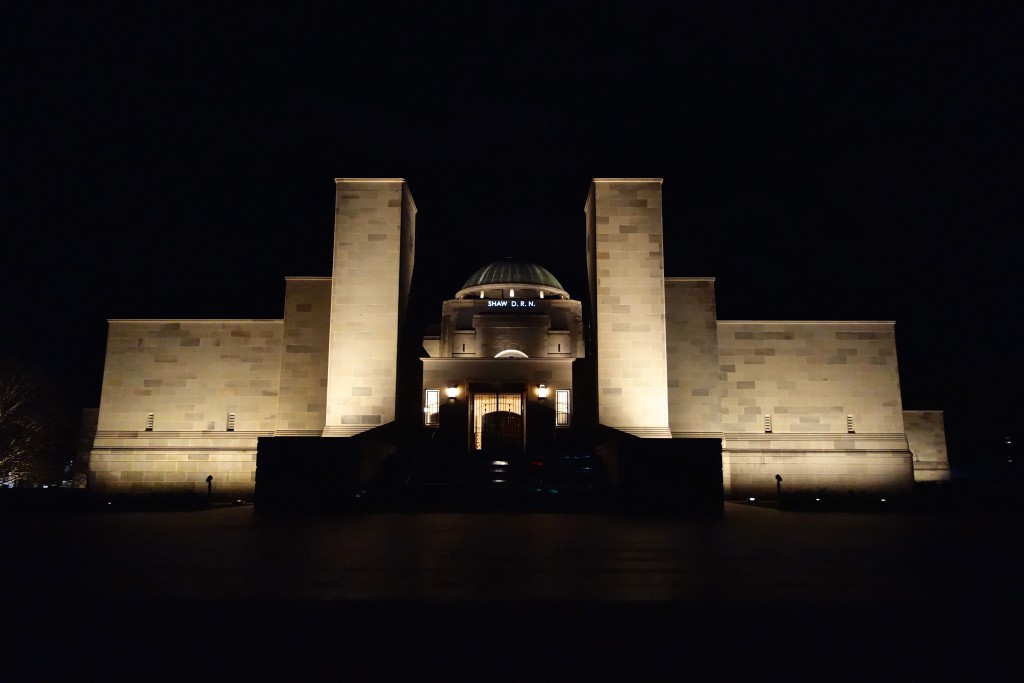
Because he died defending Australia, his name was written in light for 30 seconds tonight, perhaps for my benefit alone. As far as I know, none of his other family members live in Canberra. Since I’m just ten minutes away, it’s easy to whip down to the Memorial and see the names when they come up between sunset and sunrise.
D’arcey was my grandfather’s cousin. I want to remember him and his two brothers who also died in France, in the war to end all wars, because my grandfather was there too, but he didn’t die.
Nineteen-year-old D’arcey was the second son in his family to be killed in France. The first one was George, and there would be a third, Frank Percy Shaw, whose name was projected onto the War Memorial on 21st June, a night that was cool but not freezing like tonight. I wrote about him here.
As I was leaving around the back of the Memorial I saw four kangaroos standing guard in the dark. They’re delightful at a distance and are happy to be photographed from a car window, but if I’d got out and approached them they would have either hopped away or hopped towards me and treated me as an enemy.

The next date that I will have a relative’s name up for viewing is in early spring. I’m happy knowing it won’t be another chilling evening.
*****

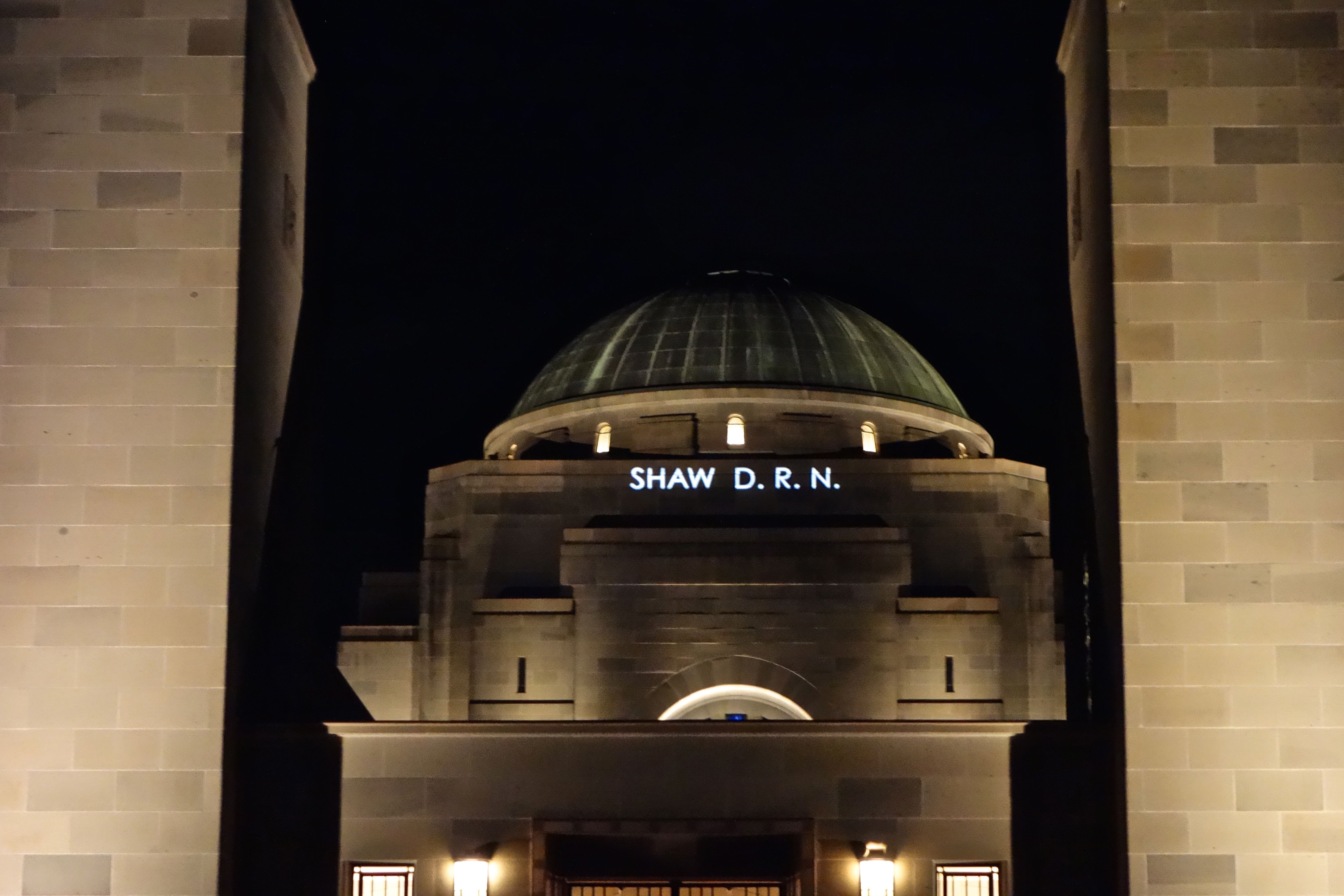
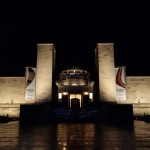
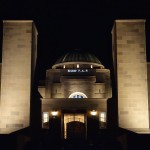
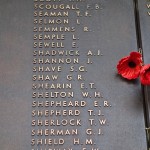
It is great to read your pieces of family history, it must be very interesting to be able to have it available or research. That war took far too many lives {from both sides}…
I’m thinking you are a legend! For braving the cold! For finding out when the names are appearing! For your dedication to their remembrance! The kangaroos deserve their place on our coat of arms. They also serve 🙂
Thanks. It certainly is interesting to have access to all the war and family records kept here in Canberra, and living close to all the institutions where they are kept.
Thanks for telling me what you’re thinking. I’ve learnt a lot about my family because of the AWM’s efforts to remember the war dead 100 years on.
Another beautiful tribute to one of your family members. Good for you for keeping the memories alive. Also, I can’t imagine seeing kangaroos out and about! They seem like a mythical creature to me only found in kids books and TV shows 🙂
Thanks for the compliment! Kangaroos are common in our suburbs because we have so much bushland nearby. They come out of the bush to munch on our lawns, especially at night and in the early hours after sunrise.
Sounds like the deer around here. Do they eat veggie gardens too?
They would, but there’s a tall fence and a dog. In drought, they’ve eaten a few plants from the unfenced front garden. Kangaroos can jump fences but they need a run up, which fortunately they can’t get in a suburban street!
Your post makes us stop and think, not only about our own ancestors and those who lost their lives in war, but also about how life goes on. These last few days kept me reflecting on the civilian tragedies in Hiroshima, Nagasaki and the firebombings of Tokyo, and how opinions can vary from what we were first taught in school. Your story would have left me depressed had you not included a second level, about kangaroos, a sort of enemy to certain people, but loved by others for their eccentricity, with their cute kids tucked in tummy pouches. Interesting parallel: you are a clever writer.
Well, thanks. You’ve just given me the confidence I need to keep writing.
You’re very welcome, but more than that, you have important new and ‘history’ ideas to share, and do it well. I always take something home with me from your posts, and the idea will later pop up in a moment of calm when my mind is roaming, free of the seemingly omnipresent media and its ability to short circuit daily life and numb the imagination. Remember, there are lots of people ‘out there’ who could learn and benefit from what you have to say — I’m just one more.
It might be of comfort to know that here in Tahiti, Anzac Day was commemorated in a ceremony with the High Commissioner, consuls, local government officials and the public in attendance.
Ah, that’s interesting! Though I don’t understand why Tahitians would have an Anzac Day service. Is it to do with the French and the Anzacs on the Western Front?
Hi Trish. Since you are a specialist at this, I will send you a link to one of the articles in Tahiti Infos (sic) here http://www.tahiti-infos.com/La-ceremonie-de-l-Anzac-day-sera-organisee-lundi-a-l-Uranie_a147751.html . If this link doesn’t work, try their site search box with “Anzac Day”.
I’ve kept you in mind, as you see, but have not been successful in finding a translation project for you.
Best to you.
Thanks Whitt88. I’ve just read the article – very interesting. I see now that the connection is with the New Zealanders, the Maori. Thanks for telling me that this happens in Tahiti. Anzac Day in Australia is getting bigger every year, after 101 years. It’s a strange thing. I went to the dawn service on Monday as an act of gratitude to my father and grandfather, but why do all those young people go, every year more and more of them? I know a woman who says she has become an Anzac Day junkie. Perhaps we’re increasingly grateful for the peace earned in two world wars and all the others. Well, at least, peace for Europeans and other Westerners around the world.